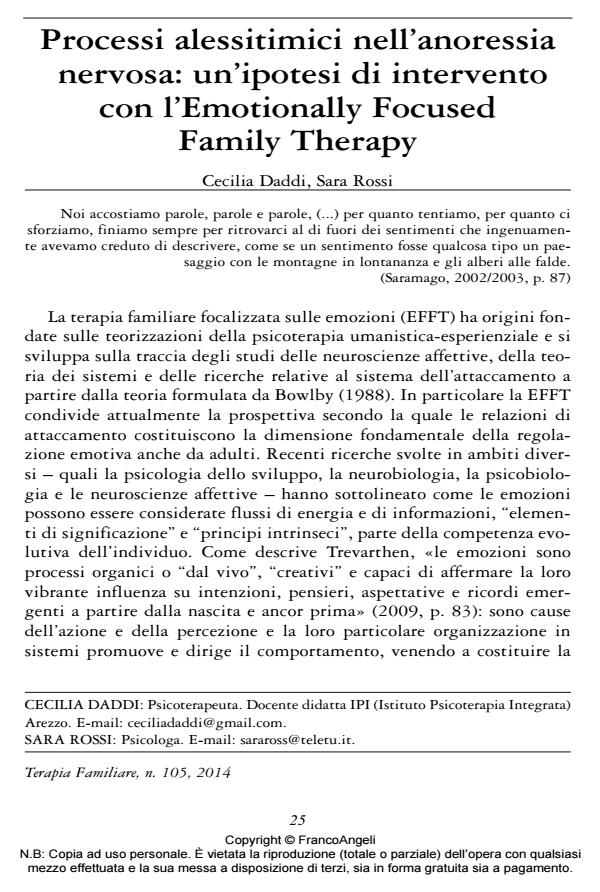Processi alessitimici nell’anoressia nervosa: un’ipotesi di intervento con l’Emotionally Focused Family Therapy
Journal title TERAPIA FAMILIARE
Author/s Cecilia Daddi, Sara Rossi
Publishing Year 2014 Issue 2014/105
Language Italian Pages 28 P. 25-52 File size 168 KB
DOI 10.3280/TF2014-105002
DOI is like a bar code for intellectual property: to have more infomation
click here
Below, you can see the article first page
If you want to buy this article in PDF format, you can do it, following the instructions to buy download credits

FrancoAngeli is member of Publishers International Linking Association, Inc (PILA), a not-for-profit association which run the CrossRef service enabling links to and from online scholarly content.
The fundamental hypothesis of this paper is that eating disorders, and the behaviours/ attitudes related to them, are indicators of specific emotional strategies. In particular, and with reference to Alexithymic dissociative processes developed through insecure early attachment relationships, anorexia is analysed as indicative of an affective regulation avoidance strategy. In the light of this theoretical premise, the authors posit a particularly effectiveness of treatment that uses approaches referencing Attachment-related therapies and Affective balance therapies. Thus, as an example Emotionally Focused Family Therapy (EFFT) is examined and its efficacy discussed and connected to theoretical hypotheses and empirical research related to developmental and intersubjective processes of affective regulation.
Keywords: Emotionally Focused Family Therapy, alexithymia, anorexia, attachment, affective regulation, intersubjectivity.
- Tale of Two Continents: Environmental Management-Based Regulation in the European Union and the United States Rachel E Deming, in SSRN Electronic Journal /2016
DOI: 10.2139/ssrn.2748229
Cecilia Daddi, Sara Rossi, Processi alessitimici nell’anoressia nervosa: un’ipotesi di intervento con l’Emotionally Focused Family Therapy in "TERAPIA FAMILIARE" 105/2014, pp 25-52, DOI: 10.3280/TF2014-105002